Before this class, I loved playing RPG games and aesthetically-pleasing games, but I did not know much about game fundamentals and structures. Prior to this class, I took CS 148: Computer Graphics and fell in love with creating objects from scratch and understanding what materials, when used in combination, created the shine I see on glass or the rough textures that just “felt rough” when you looked at the objects. I am also a huge fan of art, especially character designs in different games. I wanted to find a way to merge accessibility, graphics, and basic art. The breadth of my interests led me to take this Design for Play class.
Growing up, I played a variety of games, ranging from made-up story arcs, to card games, to a select few console and mobile games. These games were all fun, but in different ways that I did not yet know how to categorize. This class taught me all the terminology related to gameplay and types of fun. More specifically, this class helped me gain a better grasp of what game types I enjoyed more and why.
I played more new games in this class than I’ve ever did this academic year. I’ve played games that made me extremely nervous and I’ve played games that were directly in my comfort zone, games that I introduced to other friends and persuaded them to play with me after class. I came to enjoy games that I didn’t initally “like”, simply because I was placed in an environment where I could learn alongside my peers who love gaming, peers who are on the fence, and peers who have never played games (the most essential and valuable playtester during game development!).
The most valuable aspect of the class was constant iterating while learning about new aspects of games and fun. The game mechanics and game design concepts we learned in class were directly applicable in our projects. I initially struggled trying to apply the class concepts to the games I played. However, with time I became better at recognizing game mechanics through exposure to gameplay and through creating 2 original games with my teammates.
For the first project, my team and I created an analog board game, Better Life, where the objective of the game was the gain as much happiness points as possible before death. During this journey, players would get to know one another more deeply by answering scenario-based questions that may occur in a real-life setting. For our second project, soRRRt, we developed an environmental-based recycling game targeted for students in a dorm setting. This was a trial-and-error 2D pixel-art game that encourages players to learn how to properly sort their trash in a light-hearted, but urgent setting. These projects helped me directly visualize the game mechanics and play testing our games helped me get first-hand exposure to different types of fun. For example, learning about tutorials from the video we had to sketchnote for an assignment helped me better understand what a tutorial should look like in my project 2 game.
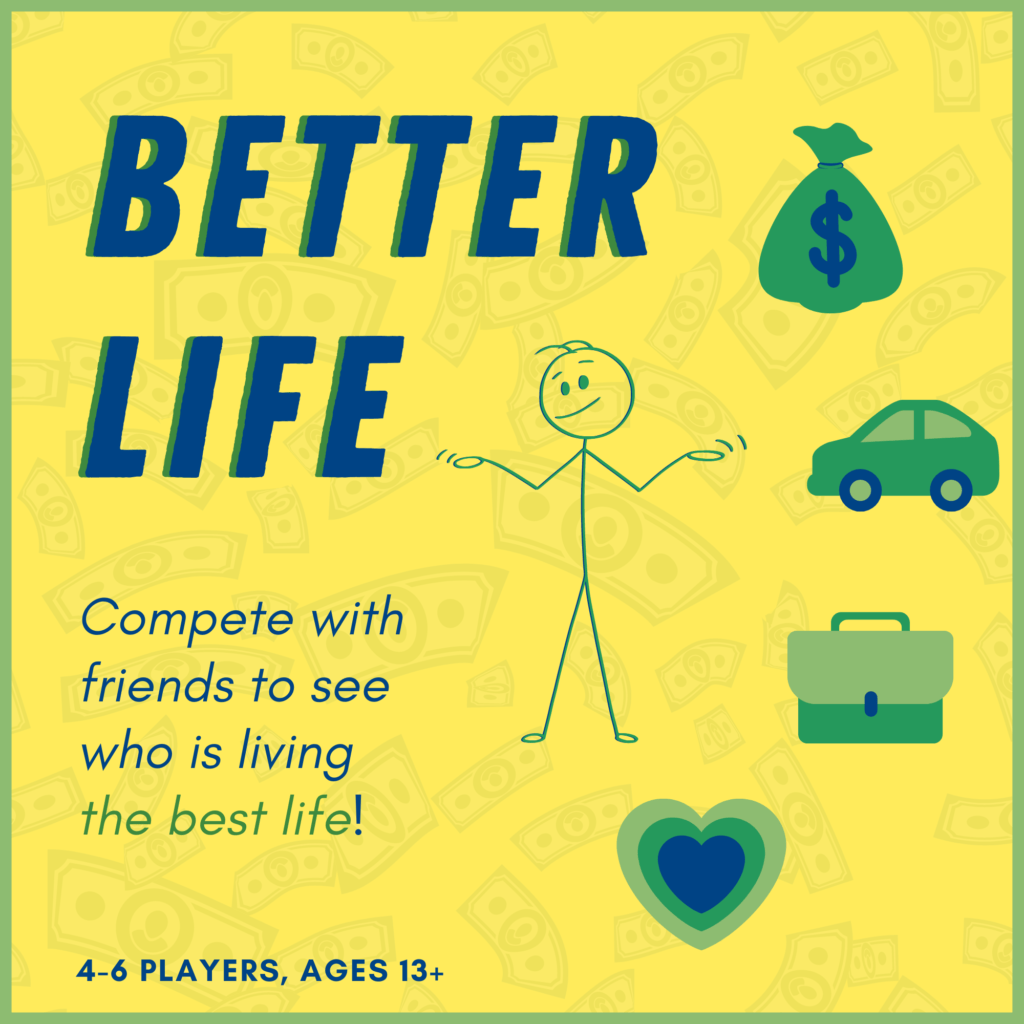
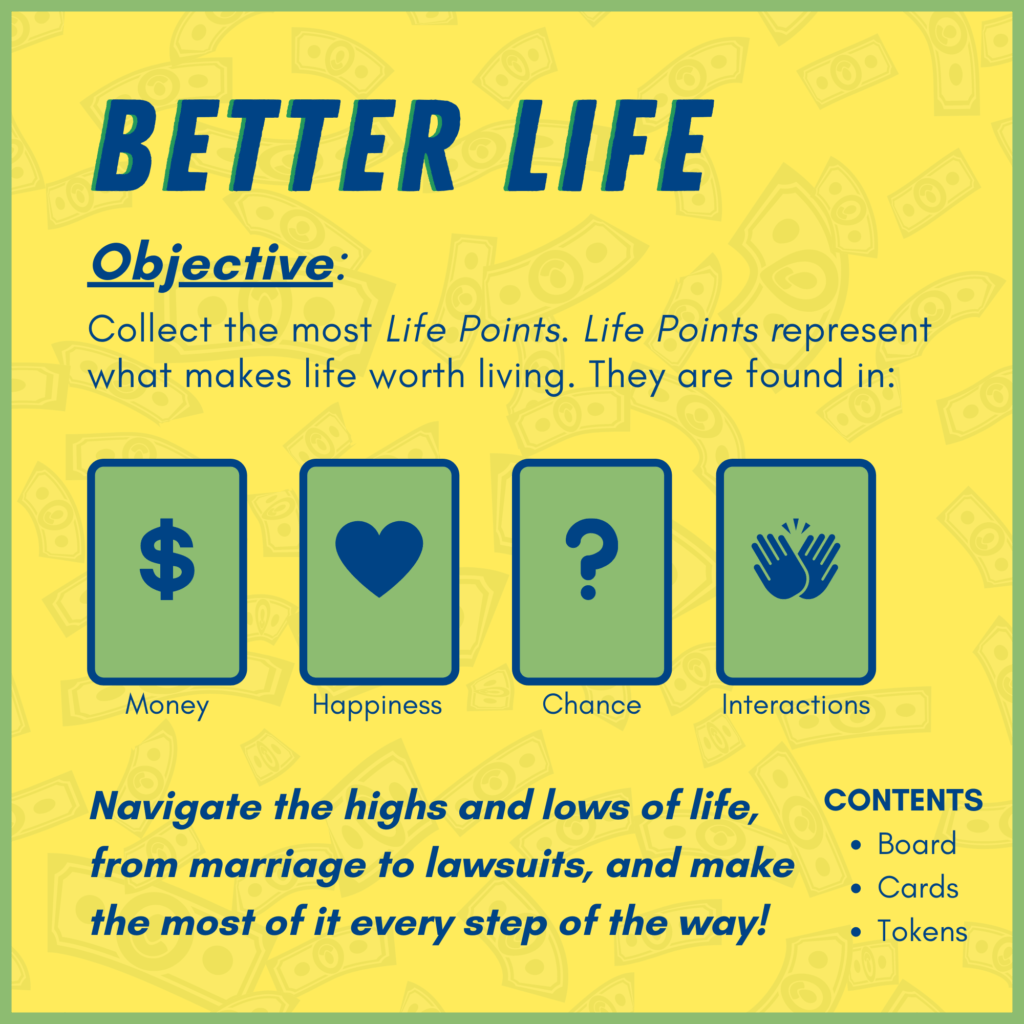
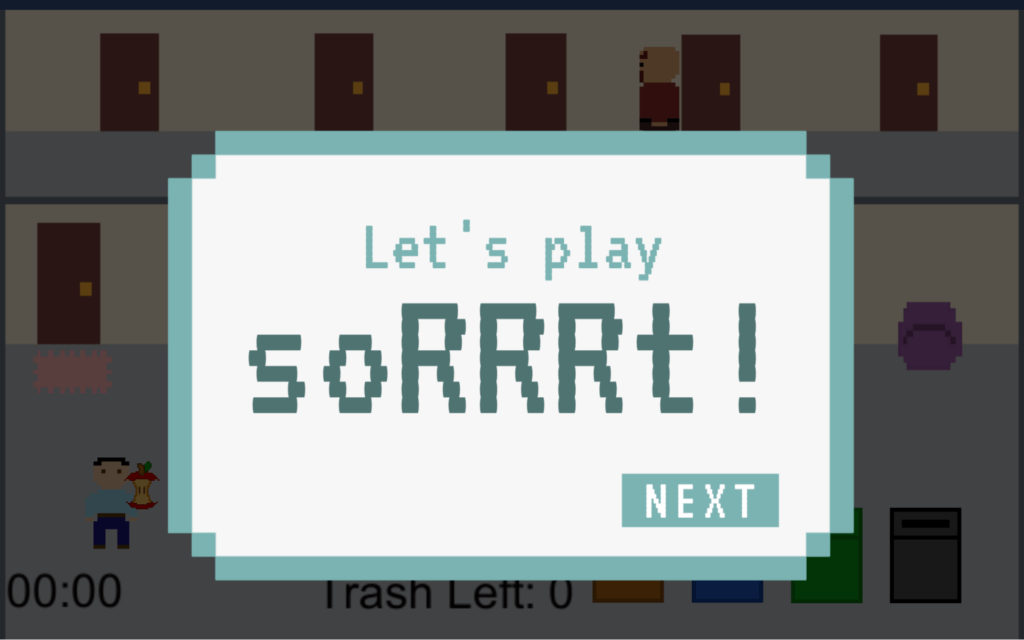
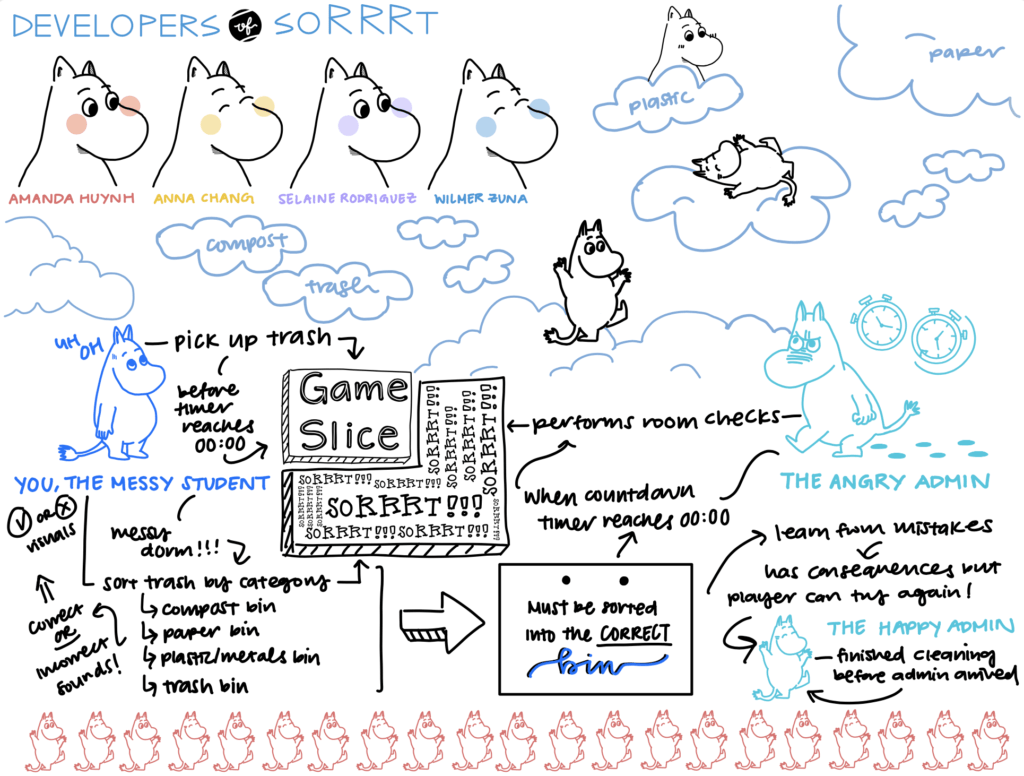
I’ve learned that sketchnoting and mindmapping are extremely useful skills that are applicable beyond the scope of game design and development. I love this style of notetaking, and although I was never much of a visual learner, spending time on my sketchnotes helped me hone in on the key points of the readings and videos. I’ve learned to be more mindful of the content I include in my sketchnotes and mindmaps, and as such, I grew more picky yet creative with my work.
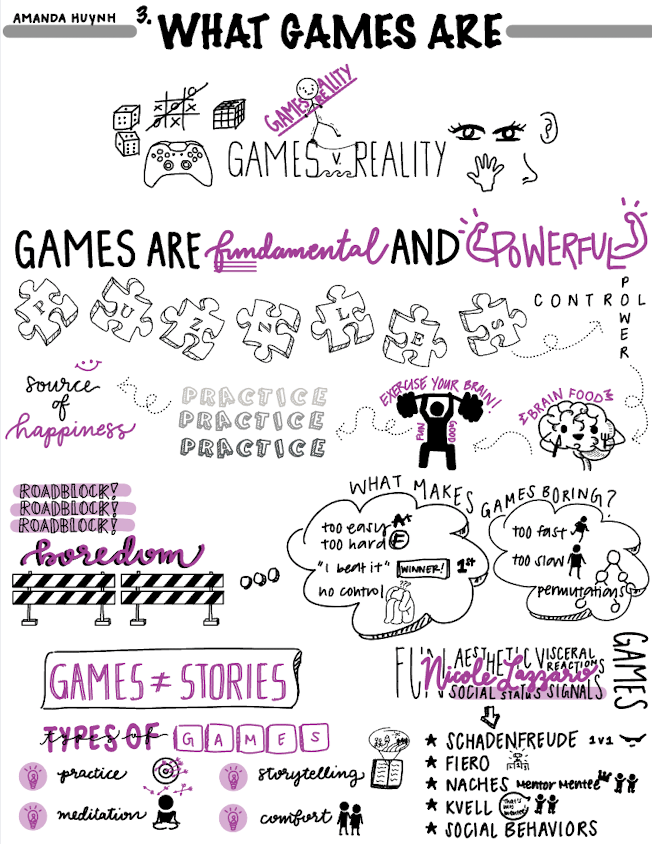
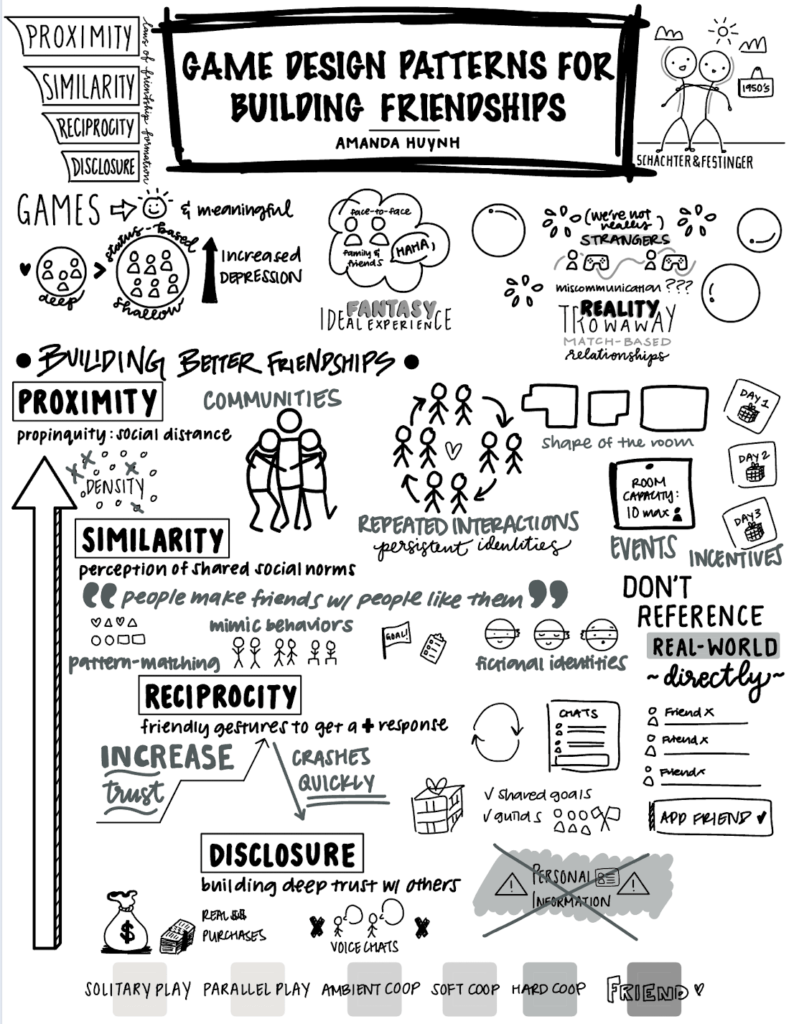
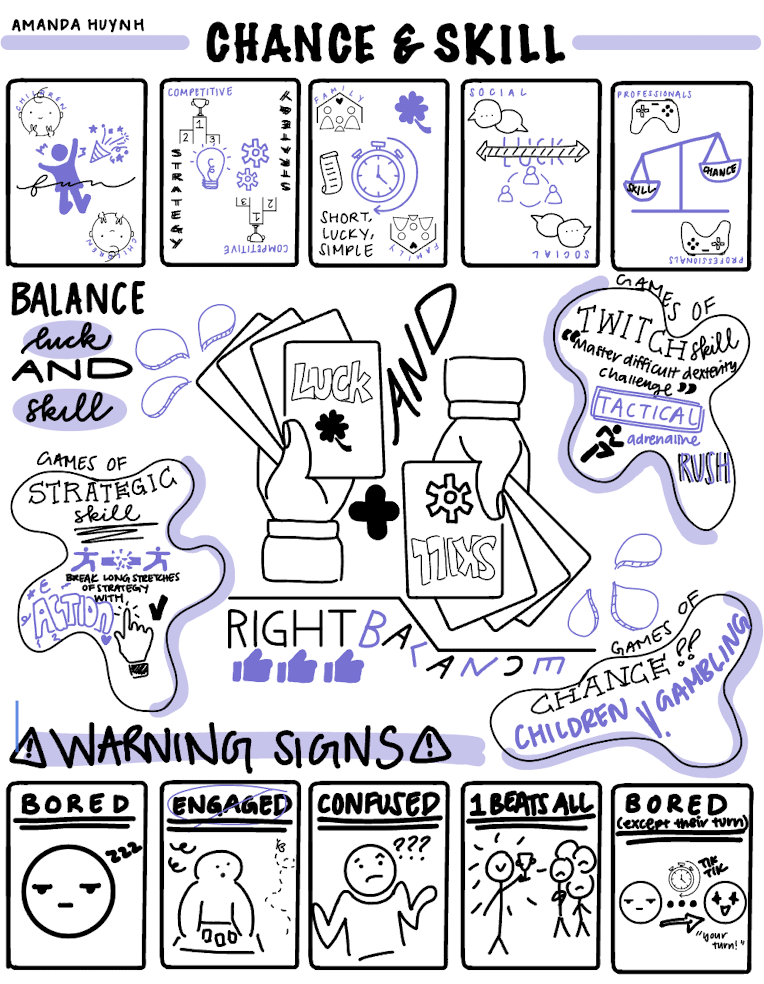
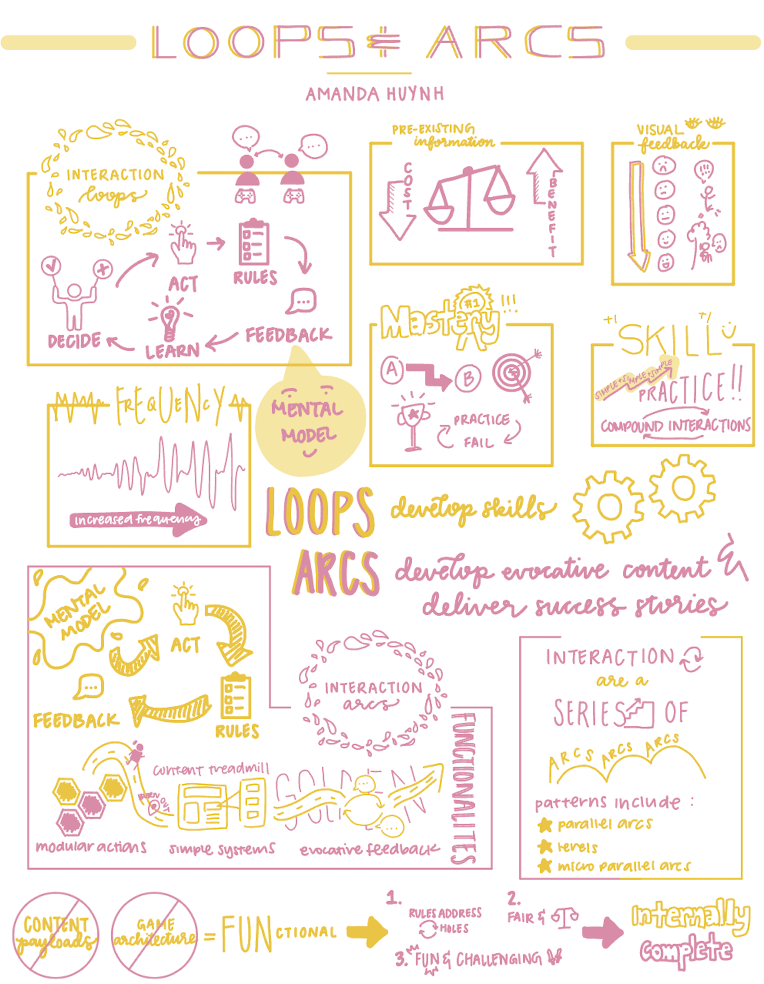
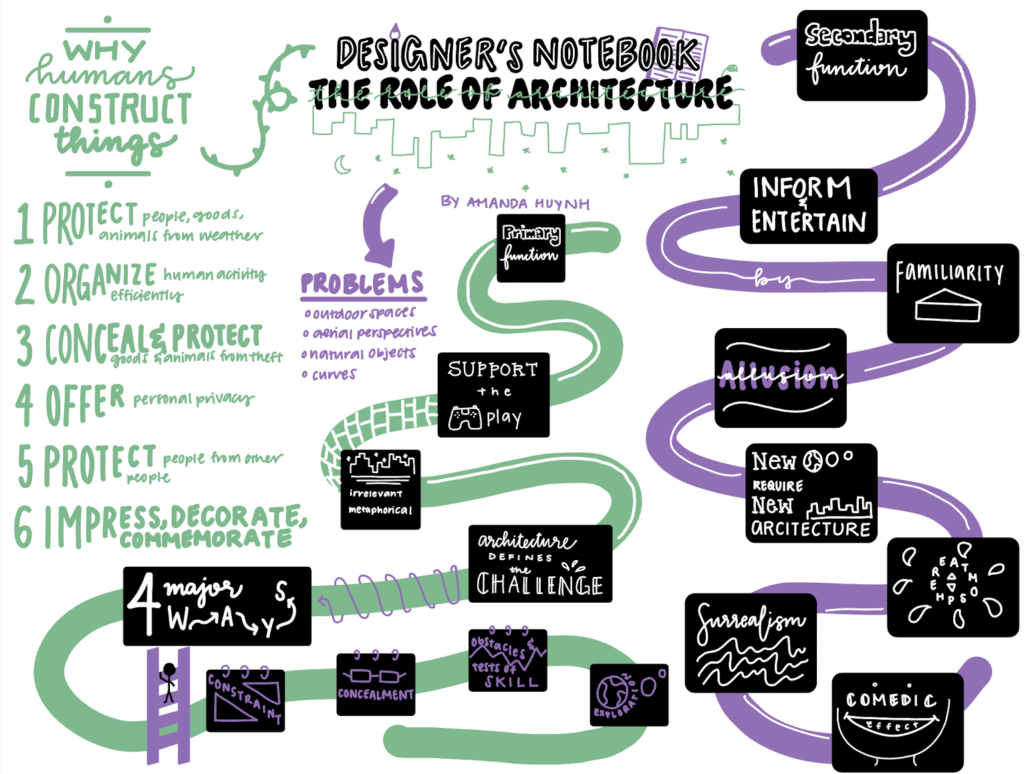
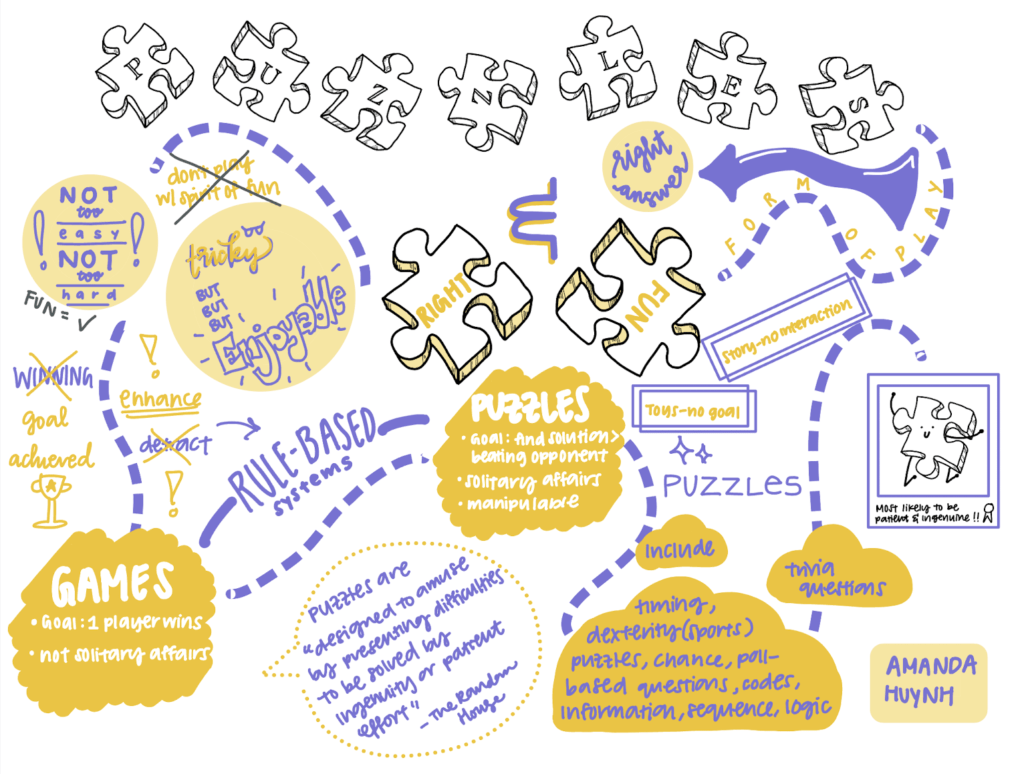
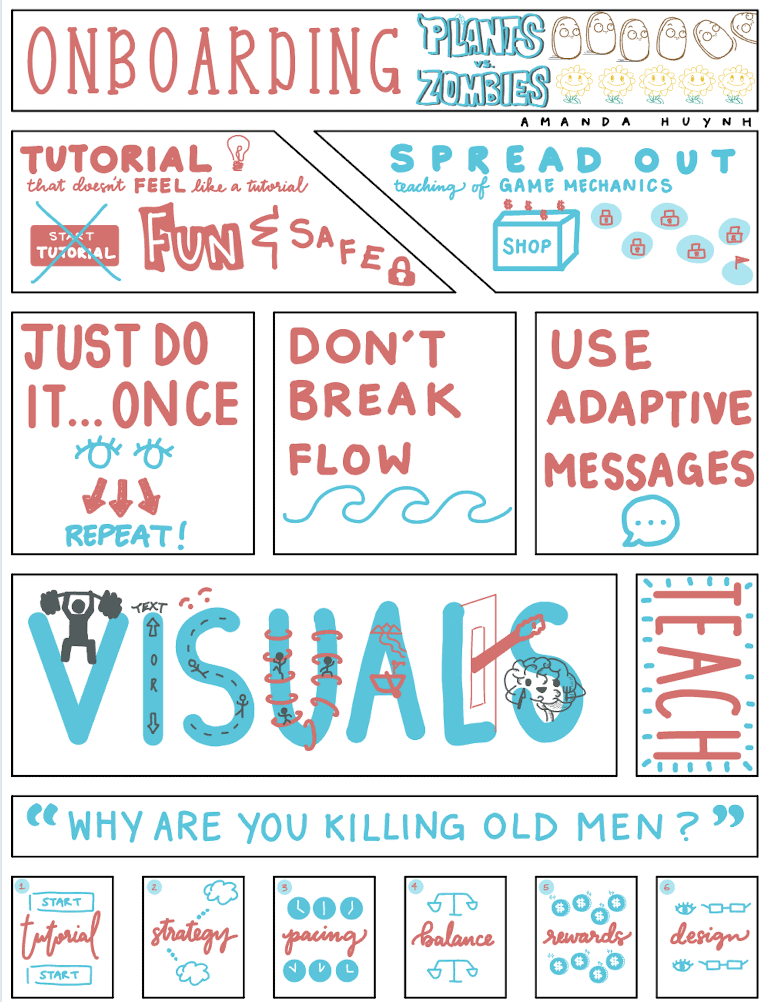
In the future, I hope to do more sketchnotes and with future games, I hope to be more mindful of accessibility in games. With practice, I hope to develop culturally-sensitive games accessible to all. On my path to become better at developing mindful games, I’ll be trying out new game genres and learn to recognize game mechanics with ease.
I want to thank Christina, the TA’s, and Nina (was so close to creating a game with Nina as the main character, and might still do so!) for a wonderfully-taught course. Thank you Christina for your vulnerability and for giving us the freedom to develop without limitations. This is by far one of my favorite classes at Stanford! I hope to stay updated with Nina’s instagram even after this class. She has a loyal follower!


